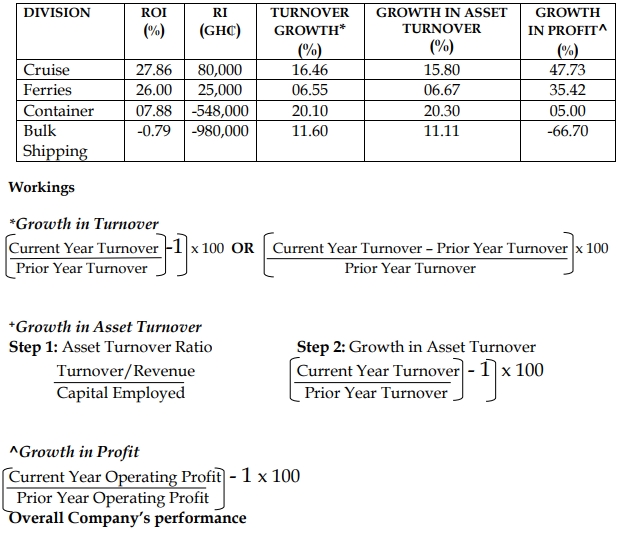- 20 Marks
Question
a) Asawasi Company, a relatively new company, is in the business of designing and building farm equipment and machinery. Whilst it has been successful in its first few years of operation, sales are now in decline as competition in the industry has intensified and there is greater rivalry between the competing organisations.
A review undertaken by consultants has recommended that in order to gain sustained competitive advantage, the company needs to establish the basis on which it can compete more effectively against its rivals in the future.
Required:
i) Describe the concept of competitive advantage and include references to the different bases Asawasi Company could use to achieve competitive advantage.
(5 marks)
ii) Describe the factors that can create competitive rivalry between organisations.
(5 marks)
b) An introduction of a new technology is an introduction of a new business. This is a statement of fact and evidence abounds in many African economies. The introduction of mobile phones came with space-to-space business and eventually gave rise to mobile money services.
Required:
Using Porter’s Five Forces model, identify the competitive forces that influence the state of competition in the mobile money industry and the profit potential of the industry as a whole.
(10 marks)
Answer
a) i) Concept of Competitive Advantage
Competitive advantage refers to any activity or factor which gives one organisation an edge over its rivals. The edge that an organisation has over its competitors may be viewed from three angles: superior position, superior skills, and superior resources. Organisations should adopt a strategy that is intended to achieve some form of competitive advantage. Doing something better or more efficiently than competitors should ultimately lead to profitability. If this can be done long-term, despite the efforts of competition, then the organisation possesses a sustainable competitive advantage.
(2 marks)
Bases of Competitive Advantage:
- Cost Leadership:
- Being the lowest cost producer in the industry as a whole. By producing at the lowest cost, the company can compete on price with every other producer in the industry and earn higher unit prices.
- Differentiation:
- Exploiting a product or service that the industry as a whole believes to be unique. This can be achieved via brand image, product special features, marketing techniques, etc.
- Focus:
- Restricting activities to only part of the market (a segment). This is also known as a niche strategy. It can be achieved by providing goods/services at a lower cost to that segment (cost focus) or by providing a differentiated product/service to that segment (differentiation focus).
(3 points @ 1 mark each = Total of 3 marks)
ii) Factors Creating Competitive Rivalry
Organisations that provide a similar product/service aimed at the same target market will experience a certain degree of competitive rivalry. The intensity of competitive rivalry within an industry will affect the profitability of the industry as a whole, as price wars and advertising fees reduce the profits of the rivals.
Factors Creating Competitive Rivalry Include:
- Low Barriers to Entry:
- Low barriers to entry increase the number of organisations in that industry, thus creating rivalry.
- Market Growth:
- Rivalry is intensified when firms are competing for a greater market share in a total market where growth is slow or stagnant.
- Cost Structure:
- High fixed costs can tempt firms to compete on price, as any contribution from sales is better than none at all.
- Switching Costs:
- Low switching costs make it easier for customers to change suppliers, leading to increased competition.
- Uncertainty:
- Uncertainty in the environment can increase rivalry as firms compete to secure their position.
- High Exit Barriers:
- Difficulty in exiting the industry forces firms to fight for market share, intensifying competition.
- Strategic Importance:
- When success in a particular market is a prime objective for many firms, competition is likely to be more intense.
(2 points @ 2.5 marks each = 5 marks)
b) Porter’s Five Forces Analysis of the Mobile Money Industry
1. Threat of New Entrants:
- New entrants bring additional capacity and more competition to the industry. The strength of this threat depends on the barriers to entry, such as the amount of capital required to start the business and the likely response of existing competitors.
2. Availability of Substitutes:
- A substitute product is one produced by another industry that satisfies the same customer needs. For example, online banking through mobile apps could serve as a substitute for mobile money services.
3. Bargaining Power of Customers:
- Customers’ ability to force down prices or demand better quality affects profitability. Factors influencing this power include the cost of the service, its importance to the customer’s business, and switching costs.
4. Bargaining Power of Suppliers:
- Suppliers of key inputs or services can exert pressure for higher prices. The strength of this power depends on the availability of substitute services, the importance of the supplier’s input to the mobile money industry, and the cost of switching suppliers.
5. Rivalry Among Existing Competitors:
- The intensity of competitive rivalry affects overall profitability. Rivalry might take the form of price competition, advertising battles, or the introduction of new products and services. Increased competition can lead to market expansion or reduce profitability if demand remains unchanged.
- Topic: Strategic alternatives, analysis and selection
- Series: MAY 2019
- Uploader: Theophilus



